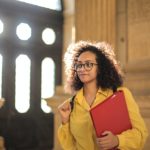By JUSTIN JUOZAPAVICIUS
Associated Press
TULSA, Okla. (AP) _ U.S. Supreme Court Justice Sonia Sotomayor said Wednesday she wouldn’t be where she is today without affirmative action, and that to think that such programs are no longer needed is to be “blind to a reality that’s staring you in the face.”
“(Race) makes a difference in a society, because a society is affected by it at every level,” said Sotomayor, who spoke for more an hour during a moderated chat to University of Tulsa faculty and students.
She said it may start with many people of color being born in economically challenged circumstances, going to school in districts that lag behind, or even where people go to camp.
“So many of my lawyer friends, the people that they have as clients are people they met at summer camps. Many minorities never have the opportunity for that experience,” said Sotomayor, the first Hispanic on the Supreme Court.
The justice _ only the third woman on the nation’s highest court _ wrote the dissent in April in a 6-2 decision that upheld a state’s right to outlaw the use of race in determining college admissions. She told the audience that when she was a senior in high school, a friend who went to Princeton University called her and urged her to come to the school.
“’You have to go to an Ivy League school,”’ Sotomayor recounted him telling her. “”And what I said to him was, “what’s an Ivy League school?”’
She did apply, got in and was a good student, the justice said, “but I wouldn’t even have known to apply because I came from a world where that wasn’t the expectation.”
“And that’s true of a lot of kids in a lot of communities,” the justice said. “I certainly wouldn’t be where I am today.”
Sotomayor was kicking off a three-day speaking tour in Oklahoma. She is scheduled to speak Thursday at Oklahoma City University and Friday in Norman at the University of Oklahoma.
She spoke on a range of topics, such as judicial ethics, her upbringing and how law schools across the country could improve themselves in how and what they teach to students.
The questions during the fireside chat included some that had been pre-submitted by either students or faculty members. Members of the media were not allowed to ask questions, either live or submitted beforehand.









